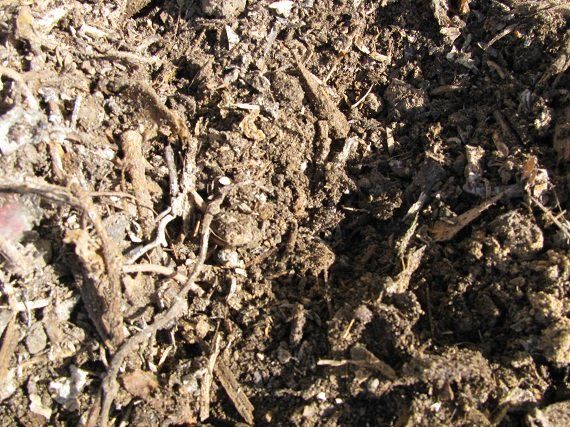Published 2012: Updated January 28, 2015
We are relatively new at composting but we're quickly becoming converted to the idea. It simultaneously transforms yard waste and food scraps into black gold. Rich fertile soil.
It’s amazing how much organic waste the kitchen produces. Instead of throwing it in the trash or sending it to the sewer via the kitchen sink’s garbage disposal, why not transform it into rich, fertile soil instead?
Basically, you need 2 ingredients: Greens (rinds, husks, cobs, egg shells, but not meat) and browns (leaves, grass clippings, wood shavings, saw dust).

I am told that a good compost mixture requires a 12:1 to 16:1 ratio of browns to greens. If you have a lot of food scraps (like we do), you will need tons of leaves and wood shavings to get the correct ratio.
Fortunately with my affinity for power-tools comes an almost endless supply for wood shavings to help with the browns.

It really helps if the browns are small in size. Large weeds or branches take forever to break down. A wood chipper works wonders at turning tree branches, corn-stocks, sunflowers, grape vines and pokey raspberry branches into wood shavings.

We got a small electric wood chipper and it works just fine. No hassle messing with smelly gasoline/oil mixtures and spending hours trying to start a smoky, greasy, finicky engine. Just plug it in and flip the switch. How cool is that? And since the solar panels on the house roof provide nearly all our electricity, this makes the wood chipper effectively solar powered too.
Between the saw dust and the wood chipper (doing its thing on the large stuff), now we have much of the browns we need for our compost pit.

Greens/Browns Salad Recipe:
Dump the greens and browns in layers into the compost bin/pit.

Every few days you turn the greens/browns salad over, mixing it up. Add water if the compost gets too dry.

After a couple of weeks, things start to break down and magic begins to happen.

Eventually the greens and browns turn into super rich compost. This compost shown above isn't quite ready yet because we originally added too large of pieces of browns, but it's getting close.
Supposedly you can have new compost every 6 weeks but ours has taken a little long than that. We're still leaning.
We recently started separating the compost into 3 batches:
- New
- On its way
- About done
This way, there is a continual supply of compost and you don't have to wait as long for a new batch to be ready.
In 2014, the compost pit was able to produce about 10 large wheel barrels worth of rich brown compost total, (3-4 wheel barrels from each batch).
What a great use of yard waste and food scraps! It's almost magic how they are spun into black gold? Rumpelstiltskin would be jealous. Our Pioneer ancestors would be proud!
